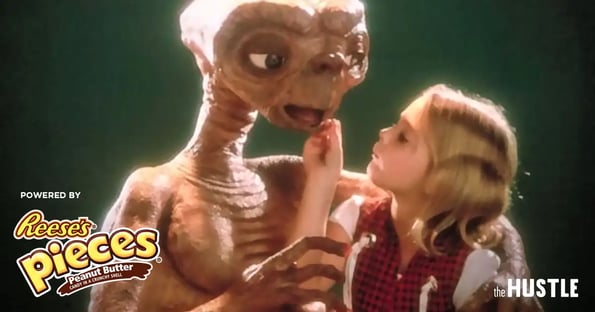A lot of people learn this lesson the hard way: You can have a great product or a great company that no one knows about at all.

Great products don’t always sell themselves. So we’ve got these marketing hacks to help you get started.
TIP #1: Make fun of yourself
There’s a product called Poo-Pourri. It’s a blend of essential oils that erases bathroom odors.

But talking about this product is awkward as fu*k. You might need it at the office after a Chipotle chow down, but it’s a bit much for casual co-worker conversation.
How do you get people talking? Poo-Pourri decided to own it by creating a hilarious commercial video. It went viral. As of this week, it had 34.5 million views on YouTube. Some of their other videos also went viral, with views in the millions.
How many companies can say that about a commercial for their product?
It’s like walking into a party when you don’t know anyone. The easiest way to break through people’s defenses is to make a joke.
TIP #2: Partner up for publicity stunts
In 1999 the textbook rental company Half.com persuaded the town of Halfway, Oregon to change its name to Half.com.
In exchange, they gave the town stock in their company, free computers, and free internet access. This created a lot of publicity and is possibly how they got on eBay’s radar. eBay acquired Half.com for $300 million in 2000.
The website Sugardaddie.com attempted to copy them and tried to purchase the scenic Northern California town of Woodside (where the Silicon Valley elite live). They offered $11.65 million to the town if it would rename itself Sugardaddie.com. Woodside turned the offer down.
TIP #3: Get an attention-grabbing brand ambassador (a fictional one is OK, too)
Ever seen E.T., Steven Spielberg’s movie about a lovable extraterrestrial?
If so, you might remember that — despite being an alien — E.T. could appreciate that Reese’s Pieces are freaking delicious.
But how did he develop his love of the colorful, highly-processed, sugar-covered peanut butter candy? Product placement, baby.
In fact, M&Ms was offered the deal first, but refused. Execs there probably kicked themselves later because the campaign helped make Reese’s Pieces popular worldwide.
TIP #4: Throw an event
Events are a great way to meet customers and build brand recognition. Take the Macy’s Thanksgiving Day Parade. It was originally thought up in 1924 by Macy’s employees. Many of them were European immigrants who attended parades during holidays in their home countries.
Macy’s Parade started with employees dressing up for customers every year. As more people started to attend, they expanded to include floats, bands, and elephants on loan from Central Park Zoo.

By putting on the parade, Macy’s associated itself with all the warm and fuzzy feelings people have during the holidays. They also designed a cool parade finale program, releasing hundreds of balloons at once in the 1929 parade. Macy’s put a company label on the balloons, and anyone who mailed a deflated balloon back to the store received a free gift in return.
TIP #5: A great customer experience will grow your product
Look at the popularity of Instagram, Snapchat, and Groupon. In all of these companies, customers wanted to get people to join because it would make their own experience more fun or they’d get a cash reward.
This might seem like the obvious upside of any business that taps into social media, but a company that can pay existing members back for recruiting new members will sell itself.
Take the company, “Wake Up Now.” No one could figure out what the company did because its health and financial management products were such a weird mashup of energy drinks, tax software, and travel discounts. But the company model was a multi-level marketing operation, and members were compensated for recruiting others.
Everyone thought about the product as a kind of pyramid style club membership and was sure they were close to getting huge rewards. But few did.
The company stopped operations in February 2014 after This American Life did an exposé on them in late December.
TIP #6: Know thy customer with profiling #forthewin
Many companies find it helpful to make “profiles” of customers so they can sell directly to a specific demographic, rather than the amorphous concept of “customers”. It’s the same philosophy as looking at a single person and talking to them while giving a speech.
Here’s what you need for a customer profile:
- A photo.
- Demographic information: This could include age, gender, location, ethnic background, marital status, and income.
- Psychographic information: This type of information goes beyond the “external” and identifies a customer’s psychology, interests, hobbies, values, attitudes, behaviors, and lifestyle.
Then the stunts…
And then, when you’re ready to get really crazy, you can go all out. Here are a few more ideas:
- Stage a flashmob dance in the busiest square in your city.
- Give away free money in a contest as a way to get followers on Twitter or other social media. This random guy hid free money all over San Francisco last year and got 605,000 Twitter followers out of it. Many of the cash drops were less than $100.
- Get a mascot. They can be weird. Really weird. But there’s something about ‘em.

